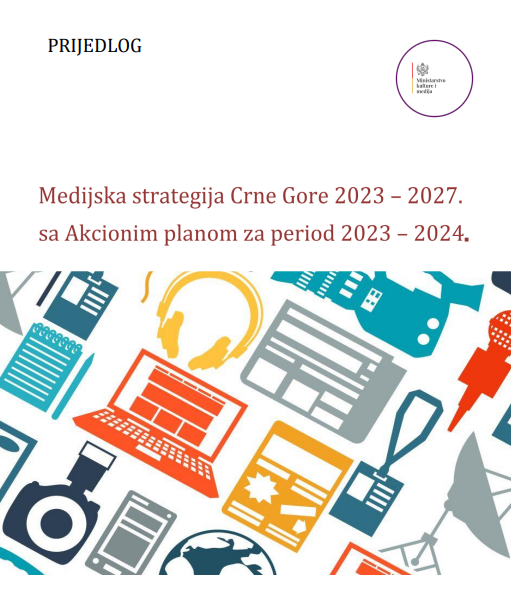PODGORICA, 23.10.2023. – In Montenegro, the first Media Strategy for the period from 2023 to 2027 was adopted, and with this, the state assesses the media environment for the first time and prescribes a list of goals that should lead to the improvement of various aspects of media freedom.
“According to the latest data from the Ministry of Culture and Media, there are 182 registered and active media in Montenegro, i.e. those registered in the Media Registry. This total number is not final because there are internet publications that publish certain content, permanently or occasionally, but were not registered in the media’s records because, according to the current law, registration is not mandatory,” the document says.
In addition to the problem of financial sustainability, the Strategy cites insufficiently developed self-regulation as a long-standing problem, which also affects compliance with ethical standards.
“Due to the obvious connection between the situation in the state and the media, there are frequent attempts of political influence, and the unstable political environment can slow down the adoption of relevant normative frameworks, which aim to improve the quality of the overall media scene. The next factor that greatly affects the work of broadcasters is the economic factors, and in particular, this refers to budget funds intended for the media, as well as various types of subsidies. In addition, low earnings coefficients, the use of various employment institutes for journalists and other workers with uncertain long-term engagement, are the basic social factors that affect this public policy. Limited technological-technical progress of broadcasters, especially public ones, represents another risk of non-competitiveness in the Montenegrin and regional markets. Also, the limited capacities of the institutions that create and implement this public policy hinder progress in this sector,” the document states.
Four strategic goals were identified: improved quality of citizens’ information and improved media literacy; strengthened editorial and financial independence, ethics and professionalism of public broadcasters; improved environment for fair market operation of the media and an improved framework for the work and position of employees in the media.
“The research of the Trade Union of Media of Montenegro (SMCG) from 2021 showed that the economic and social position of journalists is still characterized by poor material status, pressures, overload and fear. As many as 38% of journalists earn less than
average, i.e. less than 500 euros, while 30% of respondents have more than 600 euros. The surveyed journalists assessed that journalists in Montenegro are not in solidarity (80.5%), and almost all journalists believe that journalists in Montenegro are not even free. The research showed that as many as 45% of journalists were in a situation where they had to censor content. Also, 37% of those surveyed feel some kind of political interference or pressure during their work,” the strategy cites.
With the adoption of the new Law on Media, according to the legislators, it is planned to achieve better protection of the rights of journalists in Montenegro.
“Also, it is planned to introduce the employer’s obligation that the number of employees in the media cannot be reduced for a period of at least six months before applying for the distribution of funds from the Fund for Encouraging Media Pluralism and Diversity. It is also planned to create an analysis of the current challenges in the work of the media, and with the adoption of the new Branch Collective Agreement for the field of media, the status and working rights of employees in the media will be improved,” the Strategy reads.
The average earnings in the media, from the initial value of 764 euros, will first be increased by 30 percent until 2025, and additionally by another 10 percent until 2027, i.e. to 1,069 euros.
Also, the issue of the safety of media workers was particularly emphasized: “In the last three years (2020-2022), the “Safejournalists” network registered 73 attacks of threats and pressures on journalists and media outlets, of which 31 threats and attacks occurred in online sphere, and 19 attacks took place during protests and demonstrations, of which 9 were aimed at female journalists, and 64 at male journalists”.
In order to raise the awareness of citizens and institutions in charge of investigating the attack on this topic, the document states, relevant media campaigns, round tables for the courts, the State Prosecutor’s Office and the media, as well as trainings for relevant institutions will be organized.
Representatives of the Trade Union of Media of Montenegro (SMCG) participated in the work of the Working Group for the development of the Media Strategy, which was adopted with the Action Plan for 2023 and 2024.








